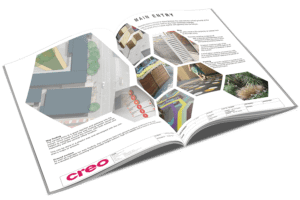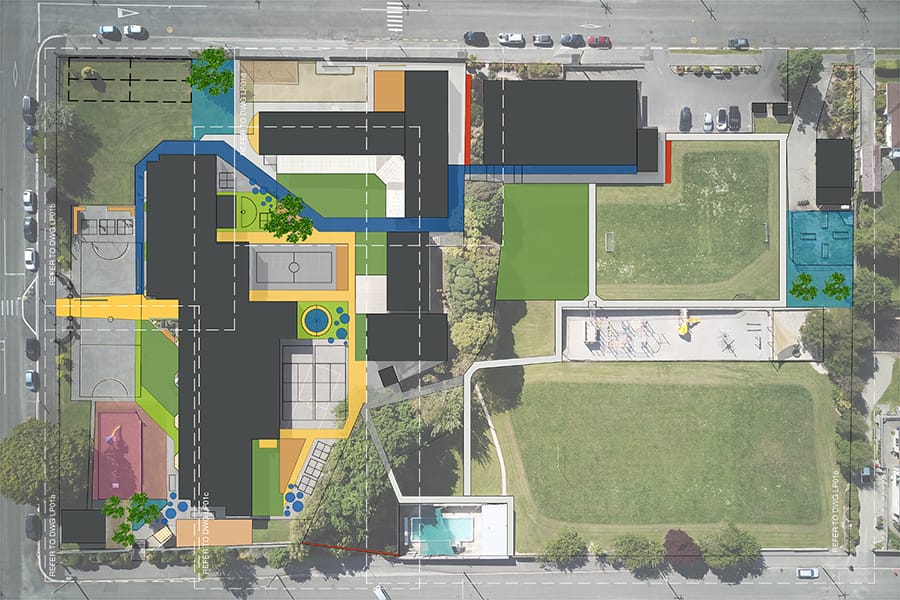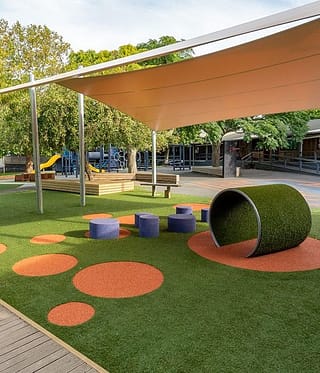There’s an old saying that goes ‘a goal without a plan is just a wish’. When it comes to developing a school play environment, one that will make everyone happy both in the short and long term, the last thing you want to do is rely on wishes.
This is why smarter schools in New Zealand steer clear of ambiguity and work in partnership with a company who can develop a master plan.
A master plan is a high-level document which clearly communicates all elements of the complete outdoor landscape of a school, with stages of design and development informing the here-and-now work while future-proofing the overall space for the years to come. It is how countless schools, developers and town planners visibly inform stakeholders of the project’s concepts, costs and design.
By determining the overall vision for the play area, any outdoor learning areas and additional landscaping support, the master plan is the critical first step of any new project. For work to get buy-in from the many stakeholder groups involved, it is important to address much more than just the design. A master plan documents how the project will meet the school’s future growth, its core values, timeframes, budget and how best to maximise the learning and play opportunities within the total school environment.
Thinking of making the exciting move to develop a school playground design? Here are the main reasons why a master plan should be the first item on the agenda…
1. One document to impress them all
 Any school has several stakeholder groups who bring differing points of view and needs to the project. A master plan provides a place where each group’s needs and input are recognised and addressed. This plan is created after consultation and analysis of needs, costs and timeframes. It is where everyone’s big ideas and wish lists become a tangible and concrete plan.
Any school has several stakeholder groups who bring differing points of view and needs to the project. A master plan provides a place where each group’s needs and input are recognised and addressed. This plan is created after consultation and analysis of needs, costs and timeframes. It is where everyone’s big ideas and wish lists become a tangible and concrete plan.
From this solid start it becomes easier to communicate the overall vision of the project to strengthen community and stakeholder support. It is a smart way to minimise misunderstandings or frustrations, and lay out how issues have been addressed and needs met. Essentially, a master plan is the best way to get everyone on the same page – and then keep them there.
2. Future-proofing outdoor areas
While the aim of a master plan is to bring everyone onto the same page, it doesn’t necessarily mean the project is then set in stone. A good master plan is designed for flexibility and to incorporate future development.
It is a way of safeguarding the school’s values while ensuring work will sit in harmony with the current environment and meets the school’s potential growth and future needs. Then, if there is more work in the pipeline that requires additional funding, a master plan serves as a PR or promotional document to help with fundraising and community buy-in.

3. No hidden trap doors
No one likes surprises, particularly when it comes to expenses. A master plan makes expenditure visible to all stakeholders and ensures transparency on planning and budgeting.
The master plan can include a cost-benefit analysis of each element of the design. This process ensures all opportunities and solutions have been explored in line with the vision of the project. It is a reliable way to determine which elements should be included or excluded. It can help alleviate overspending (or under-spending) and to analyse timelines, costs and expected outcomes.
4. Perfect timing
A play space master plan provides a shared vision right from the start. And this, in turn, creates a cohesive approach to the timeframe of the project.
From here, it becomes a simple process to categorise each element of the project and prioritise work based on importance or price. Work can be scheduled over months or years as funding allows and, with the decision-making process clearly documented, deadlines can be met to ensure minimal disruption to the ongoing school operation.

5. Making the most of every space
The ultimate goal for any school play area is the all-important playability and usability factor. There are many elements to consider for this to occur and, with a master plan, it is less likely that these elements are overlooked.
Areas that a master plan may help uncover are the use of existing shady spots, the relationship with existing buildings, the range of play types needed to cover all ability levels and how welcoming the area feels. So too can the modern learning environments be part of the cohesive whole – with each element flowing into the other ensuring ease of group movement and use of each area.
In every respect these plans allow for maximum success by giving a birds-eye-view of the project. Any school looking to achieve maximum value from their outdoor spaces should consider a professionally designed master plan.
By taking this high-level approach the school is able to determine where the project is now, where the new work will take it, and what it may look like in the long-term future.
